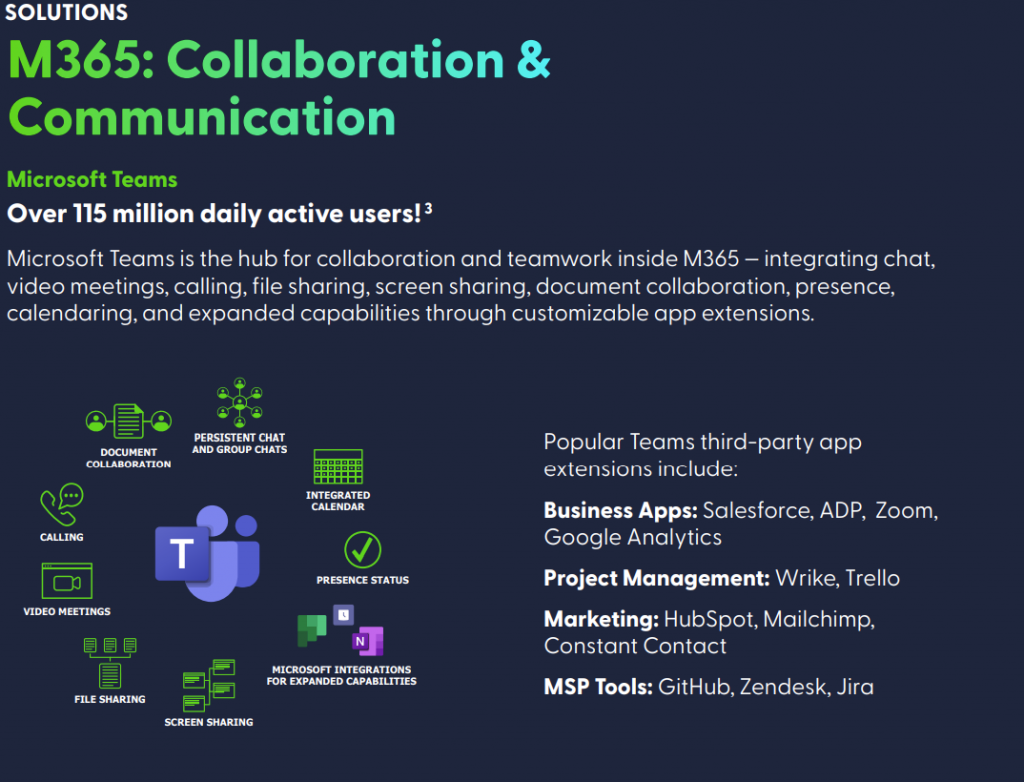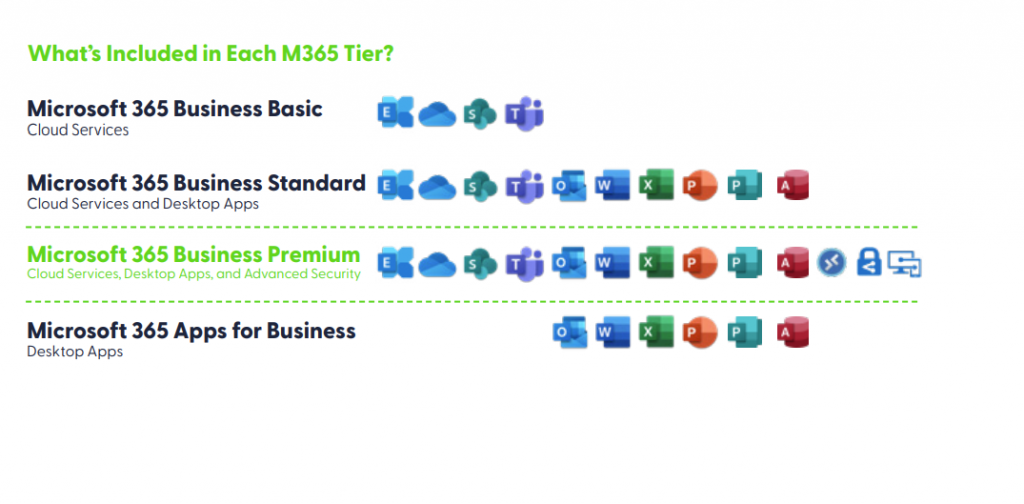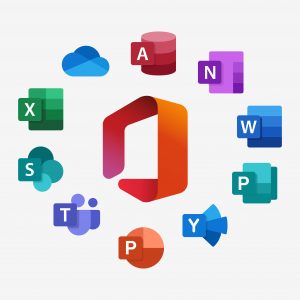
MICROSOFT 365

Microsoft 365 Business Voice
M365 Business Voice is a modern cloud-based telephony add-on to Microsoft Teams that enables you to make and receive calls from anywhere, on any device. Together, they deliver an all-in-one communication solution.
- Cloud-based phone system for reliable and secure calling across your computer, mobile device, and/or desk phone, with advanced features such as call transfer, auto-attendants, and call queues.
- Built-in audio conferencing with a dial-in number for up to 250 people per meeting.
- Included domestic calling plan – get a new number or migrate existing ones (or bring your own calling plan).
M365 Business Voice Target User Profile
M365 Business Voice is a great fit for employees that do a lot of external dialing, such as a sales reps or teams who often need to interface with external clients and partners

WHAT IS M365?
Breaking Down the Features & Functions
Advanced Security Features
- Microsoft Defender (formerly Advanced Threat Protection): Cloud-based email protection against malicious links, phishing, and spoofing.
- Multi-Factor Authentication (MFA): Safeguards access to apps and data by requiring a second form of authentication.
- Data Loss Prevention (DLP): Identifies, monitors, and automatically protects sensitive information across many locations.
- Windows Exploit Guard Enforcement: Protects devices from ransomware and malicious websites at device end points.
Data Protection & Compliance:
- Azure Information Protection (AIP): Controls and manages how sensitive content is accessed by providing classification labels on documents and email.
- Exchange Online Archiving: 100GB archiving and preservation policies help recover data and remain compliant.
- BitLocker Enforcement: Encrypts data on devices to protect it if devices are lost or stolen.
Device Management
- Intune: Manages devices and apps from the cloud, protecting company information on employee devices.
- Single Sign-On (SSO): Allows users to access multiple applications and resources by logging in only once, with one account.
- Active Directory (AD): Manages permissions and access to shared network resources such as servers, printers, and user accounts.
- Autopilot: Simplifies the new device configuration and deployment process for IT and end users







